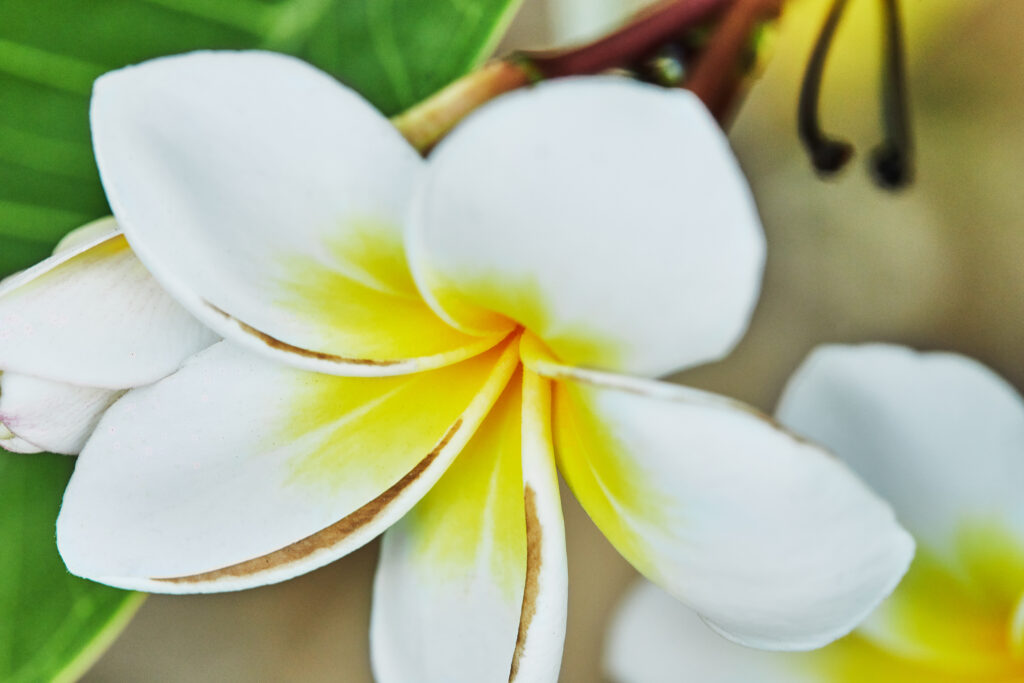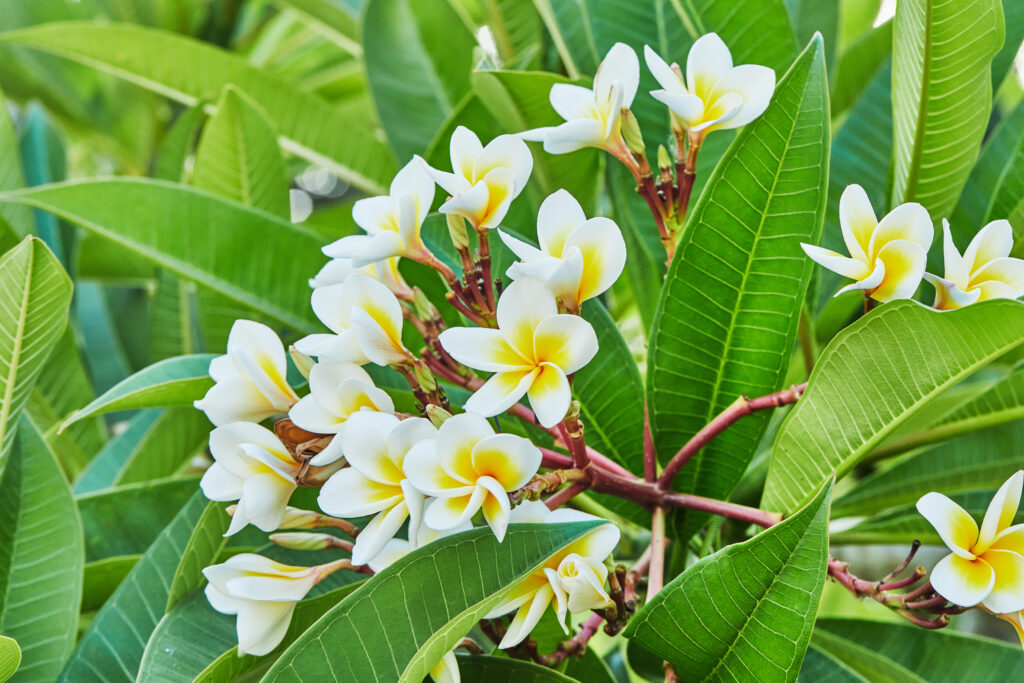Nicaragua is a country in Central America. Its Central American neighbors are Honduras to the north, El Salvador to the northwest, and Costa Rica to the south. Nicaragua’s eastern edge has miles of Caribbean coastline, while the western side is the Pacific Ocean. This article will explore the national flower of Nicaragua, the sacuanjoche. Learn about its appearance, where it grows, and its cultural significance.
The national flower of Nicaragua is native to the tropical countries of Central America, where it can thrive in countries like Nicaragua. In general, Nicaragua’s climate varies by a region’s altitude and the time of the year. During the summer, which begins in November and lasts until mid-May, the weather tends to be hot and dry, with cool nights. In the winter, which lasts from the middle of May through the beginning of November, tends to be more humid and prone to dramatic but short tropical rainstorms. These nights are more temperate. In fact, it is during these months that the national flower of Nicaragua, the sacuanjoche, blossoms in the dry tropical rainforests.
About Nicaragua
Nicaragua is the largest country in Central America. This country’s 57,143 square miles of geography are comprised of plains, valleys, and mountains. Among the mountainous areas are numerous volcanoes – which are particularly prevalent in the western and southern parts of a central mountainous region. There, you can find 40 volcanoes, including active volcanoes, the highest of which include San Cristóbal, Concepción, and Momotombo. Along the country’s eastern coastline, there are vast coral reefs, islands, and lagoons. The west is a lakes region and is home to the largest lake in Central America: Lake Nicaragua. However, few people live in the mountainous north and the eastern tropical rainforests. Most people in Nicaragua live in the western part of the country in the lowland plains surrounded by lakes.
Nicaragua, officially the Republic of Nicaragua, is a Spanish-speaking country. In fact, Spanish colonization left a lasting impact on the country’s culture and language. However, Nicaragua is historically a diverse, multicultural country. The major ethnic groups in Nicaragua are Mestizo Nicaraguans, white Nicaraguans, and Black Nicaraguans. The Mestizo Nicaraguans are the largest group in Nicaragua, with Mestizo people being the descendants of white Spanish colonizers and indigenous people groups. Among these indigenous groups are the Nahuas who live in countries across Central America. The Nahuas live in El Salvador, Guatemala, Honduras, Mexico, and Nicaragua. They speak the language Náhuatl, which deeply informs the Spanish currently spoken in Nicaragua.
Náhuatl also is the original language that provided the name for Nicaragua’s national flower, the “sacuanjoche.” This word can be split into two roots. In Náhuatl, “Xacuan”(sacuan) means “beautiful yellow petals.” “Xochilt”(joche) means “flower.” Even today, this word has continued to be the way that the flower is recognized within Nicaraguan culture.

The national flower of Nicaragua is the sacuanjoche.
©iStock.com/tumsubin
What is Nicaragua’s National Flower?
The national flower of Nicaragua, the sacuanjoche, is the species Plumeria rubra. The Plumeria rubra is a deciduous plant species that is native to countries throughout Central America, including Nicaragua. Originally chosen to be the national flower of Nicaragua in 1971, the sacuanjoche was identified by a 17th-century botanist named Charles Plumier, for which the Plumeria genus was named.
The sacuanjoche is a fragrant flower that has five white petals around a yellow center. These flowers grow on trees known as the “frangipani,” alternatively known as the plumeria. There are twelve species in the Plumeria genus, which are deciduous shrubs in the Apocynaceae, or “dogbane,” family. Plumeria rubra is one of the most common and widely cultivated species in the genus. It is especially popular in part because it can be easily cultivated. Plumeria rubra also produces especially beautiful and pleasantly fragrant flowers.
As the national flower of Nicaragua, the sacuanjoche flowers of the frangipani tree are five-petaled, large, and aromatic. They are most commonly pinwheel-shaped, waxy flowers in shades of white and buttery yellow. Because these flowers smell so sweet, they are sometimes made into perfumes and used for cosmetics.
In Nicaragua, the sacuanjoche blooms starting in May, appearing on the small frangipani trees or shrubs among their bright green leaves. These flowers grow from the ends of the tree branches and remain on the tree for months.
Where Does the Sacuanjoche Grow?
Plants in the Plumeria genus grow natively in countries across Central America, South America, and the Caribbean. However, though they are native to this part of the world, plumerias can grow outside of these tropical climates when cultivated in the right conditions. The long, green leaves and gorgeous flowers of the plumeria shrubs have become popular for their vibrant colors. In fact, plumerias are recognizable by many people because they are often used in Hawaiian leis and as part of cultural traditions in Hawaii, where they can be found adorning trees planted by religious temples and at cemeteries.
In Nicaragua, Plumeria rubra shrubs are native to the lush, hilly geography, where they can be found growing throughout the country. They are often used in landscaping, where they blossom in home yards, courtyards, cemeteries, and churches.

The sacuanjoche became the national flower of Nicaragua in 1971.
©iStock.com/Alexander Donin
What is the Cultural Significance of the Sacuanjoche?
In general, flowers carry great significance in Nicaraguan culture. Flower arrangements can communicate love and respect while giving honor to the recipient for significant occasions such as weddings or funerals.
The sacuanjoche, now the national flower of Nicaragua, has had immense cultural significance in that country and the surrounding area for centuries. Sacuanjoche is a native plant among the country’s immense biodiversity. Because of this, people have incorporated it into ceremonies and celebrations dating back to ancient times. Additionally, each flower has a stem that produces two pods. Therefore, in ancient Mayan culture, this represented male and female, which had particular meaning for the people’s understanding of biology, human psychology, and aesthetics.
Each year, festivals celebrate using sacuanjoche flowers as celebratory decorations. For example, the annual Festival of San Juan Bautista incorporates sacuanjoche flowers at their peak growing time, in June.
People have also long valued sacuanjoche for its believed medicinal value. Healers and caretakers used these flowers in traditional medicine to treat symptoms like fever and inflammation. The bark could also be used to treat injuries, with the bark made into pulp and boiled for use in medicinal compresses. Juice from the bark can also treat gonorrhea, dysentery, and other illnesses. These are just a few among many other remedies derived from the flower or bark of the plumeria tree, on which the sacuanjoche bloom.
Today, the sacuanjoche flowers are still made into garlands used for decoration and to be worn during celebrations. You can also find these flowers throughout Nicaraguan culture. They appear on the currency of Nicaragua, the national flag, and in art throughout the country’s architecture and cultural centers.
What Are the Other National Symbols of Nicaragua?
While the sacuanjoche was adopted as Nicaragua’s national flower in 1971, the country also has several other national symbols chosen by the government and its people to represent the country, its history, and its culture.
Here are some of the other national symbols of Nicaragua:
- The national coat of arms is a triangle encircled by “Republica de Nicaragua” on top and “America Central” on the bottom. Within the triangle is a rainbow signifying peace, five volcanoes representing union and fraternity among the Central American countries, and a Phrygian cap symbolizing freedom.
- The national flag has three horizontal stripes, two blue stripes with a white stripe in the middle. Within the white stripe is the coat of arms.
- The national bird is the motmot.
- The national tree is the Madroño, the species Calycophyllum candidissimum.
- In addition, the national anthem is called “Salve a ti, Nicaragua.”
This list includes just a few symbols chosen to represent the people, landscape, culture, and history of Nicaragua. If you visit this country, however, look out for the beautiful blossoms of the sacuanjoche, the national flower of Nicaragua.

Sacuanjoche, the national flower of Nicaragua, is known for its beauty, wonderful aroma, and possible medicinal healing properties.
©iStock.com/Alexander Donin
The photo featured at the top of this post is © iStock.com/rweisswald
Thank you for reading! Have some feedback for us? Contact the AZ Animals editorial team.






